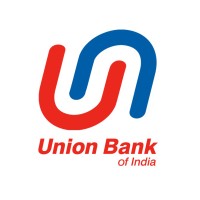Company Cyber Security Posture
NANA
NA Company Details
NA
NA
NA
NA
NA
NA
Scan still pending
NA
NA
Between 200 and 800
This score is AI-generated and less favored by cyber insurers, who prefer the TPRM score.
 NA Global Score
NA Global Score.png)

Company Scoring based on AI Models
| Model Name | Date | Description | Current Score Difference | Score |
|---|---|---|---|---|
| AVERAGE-Industry | 03-12-2025 | This score represents the average cybersecurity rating of companies already scanned within the same industry. It provides a benchmark to compare an individual company's security posture against its industry peers. | N/A | Between 200 and 800 |
Company Cyber Security News & History
| Entity | Type | Severity | Impact | Seen | Url ID | Details | View |
|---|
Company Subsidiaries

NA
Access Data Using Our API

Get company history
.png)
NA Cyber Security News
Rupali Bank Limited will Change its Name to Rupali Bank PLC
Rupali Bank Limited (the Bank) is a Bangladesh-based commercial bank. The principal activities of the Bank are to provide all kinds of commercial banking and ...
Parsoma Alam joins Sonali Bank as DMD
Parsoma Alam joined Sonali Bank Limited as a Deputy Managing Director after promotion from the position of general manager, says a press release ...
Rupali Bank wins first place in National Cyber Drill 2023
A signal to customers, businesses, investors, and regulators that Prime Bank is not only financially sound but also strategically resilient. It ...
Fayaz Alom becomes DMD of Rupali Bank -
He joined the Rupali Bank as senior officer in 1988. He served as manager to various important branches, chief of zonal and head offices in his ...
Axentec begins life on New Year's day
Axentec's suite of solutions encompasses services and applications meticulously designed to streamline business operations, boost productivity ...
Three state banks get new Managing Directors -
The government has appointed Managing Director (MD) cum Chief Executive Officers (CEO) for the three state-owned banks.
Kazi Sanaul Haque joins Rupali Bank as Chairman -
Govt bans sea fishing for 65 days from today · 'We found Chhatra Shibir as co-fighter during anti-fascist movement': Sarjis · 2 more die of ...
Shawkat Ali Khan joins BKB as MD -
Eminent banker Md Shawkat Ali Khan joined Bangladesh Krishi Bank (BKB) as Managing Director recently, says a press release.
ICMAB presents corporate awards to 65 entities -
The Institute of Chartered Accountants of Bangladesh (ICAB) presented 'Best Corporate Award 2021' to 65 organizations in different sectors ...

NA Similar Companies

ICICI Bank
ICICI Bank is one of India’s leading private sector banks, offering a wide range of banking products and services to corporate, Small and Medium Enterprises (SME) and individual customers across the country. The Bank offers multi-channel touch points including branches, ATMs, mobile banking, interne

CIBC
CIBC is here to help all our clients reach their goals. We know the importance of reliable financial products and services, and we’re dedicated to providing them in a way that lets you bank however you want, whenever you want. With innovative tools designed around your priorities and a team ful

Axis Bank
Axis Bank is the third largest private sector bank in India. The Bank offers the entire spectrum of financial services to customer segments covering Large and Mid-Corporates, MSME, Agriculture and Retail Businesses. The Bank has a large footprint of 5000 domestic branches (including extension count

Union Bank of India
Union Bank of India is one of the leading public sector banks of the country. The Bank is a listed entity, and the Government of India holds 74.76 percent in Bank’s total paid-up capital. The Bank, having its headquarters at Mumbai (India), was registered on November 11, 1919 as a limited company. O

Deutsche Bundesbank
Arbeit von besonderem Wert Als Zentralbank der Bundesrepublik Deutschland agieren wir am Puls der internationalen Finanzmärkte und an den Schnittstellen von Politik, Wirtschaft und Wissenschaft. Als hochmoderne Institution, die Digitalisierung und gesellschaftlichen Wandel mitgestaltet, haben wir

Aryavart Bank
Aryavart Bank, a Regional Rural Bank,was constituted on 1st April, 2019 after amalgamation of two Regional Rural Banks (RRBs) namely Gramin Bank of Aryavart and Allahabad UP Gramin Bank as per Government of India Gazette notification No. 338 dated 25-01-2019. Gramin Bank of Aryavart was sponsored by

Frequently Asked Questions
Explore insights on cybersecurity incidents, risk posture, and Rankiteo's assessments.
NA CyberSecurity History Information
How many cyber incidents has NA faced?
Total Incidents: According to Rankiteo, NA has faced 0 incidents in the past.
What types of cybersecurity incidents have occurred at NA?
Incident Types: The types of cybersecurity incidents that have occurred include .
Additional Questions
What Do We Measure?
















Every week, Rankiteo analyzes billions of signals to give organizations a sharper, faster view of emerging risks. With deeper, more actionable intelligence at their fingertips, security teams can outpace threat actors, respond instantly to Zero-Day attacks, and dramatically shrink their risk exposure window.
These are some of the factors we use to calculate the overall score:
Identify exposed access points, detect misconfigured SSL certificates, and uncover vulnerabilities across the network infrastructure.
Gain visibility into the software components used within an organization to detect vulnerabilities, manage risk, and ensure supply chain security.
Monitor and manage all IT assets and their configurations to ensure accurate, real-time visibility across the company's technology environment.
Leverage real-time insights on active threats, malware campaigns, and emerging vulnerabilities to proactively defend against evolving cyberattacks.




